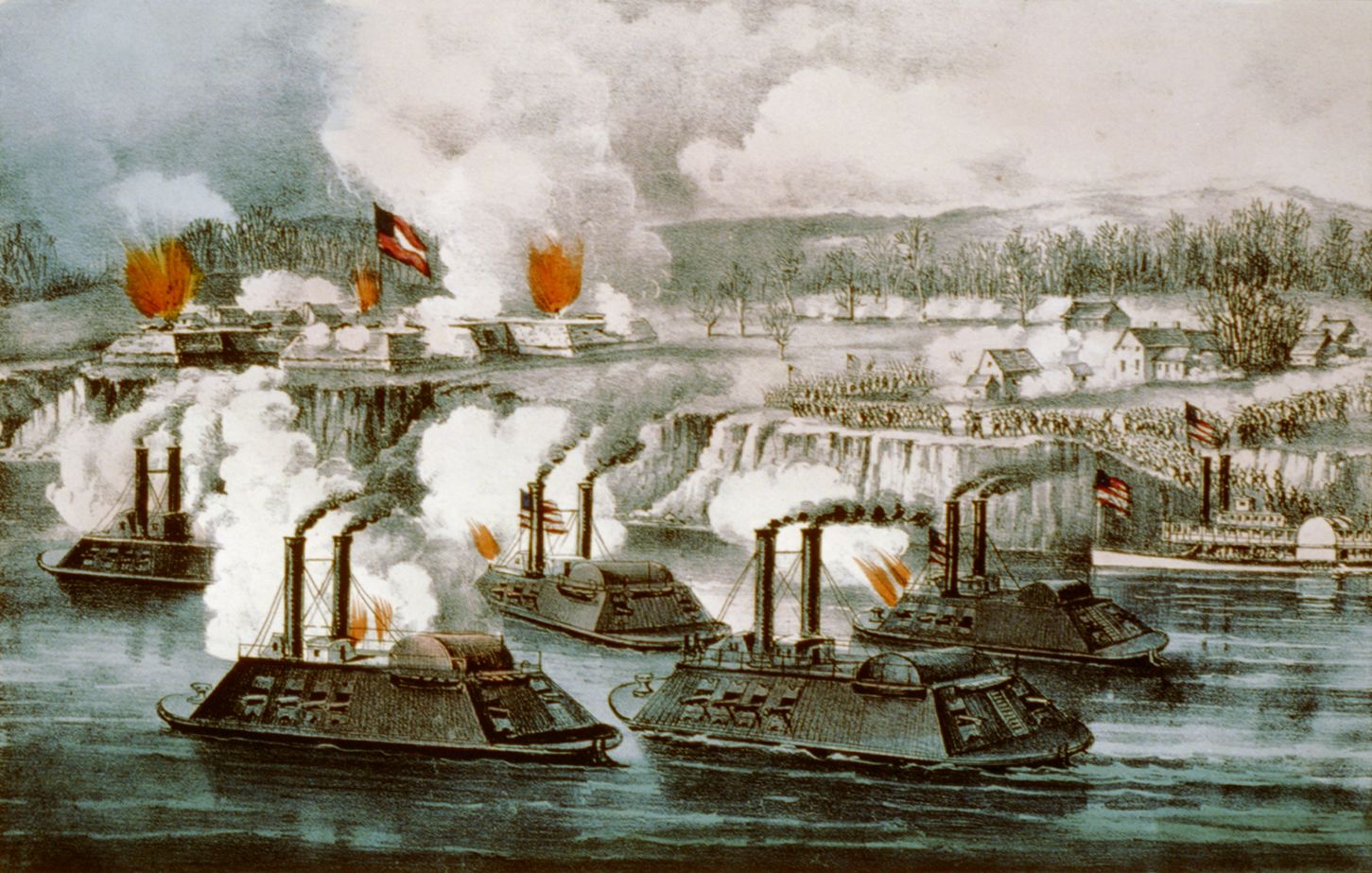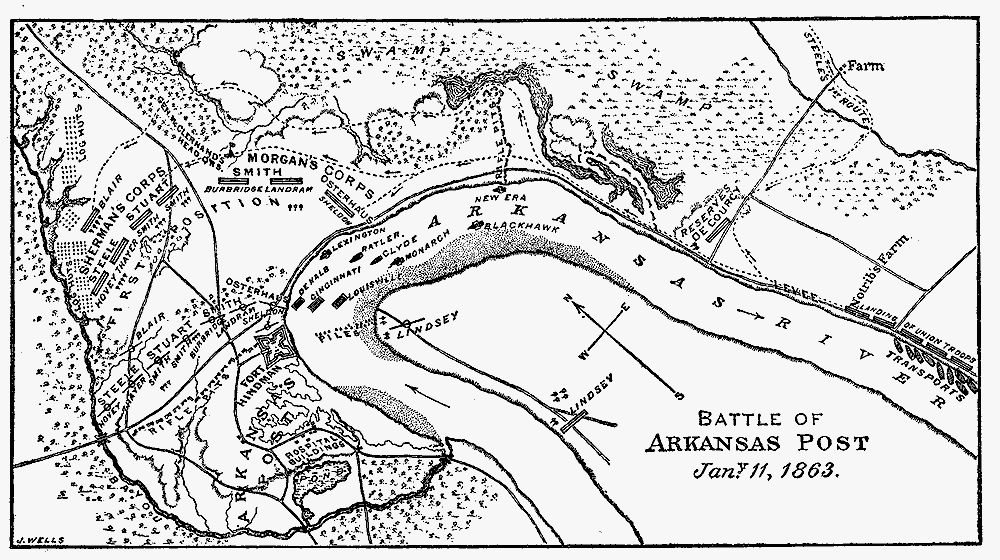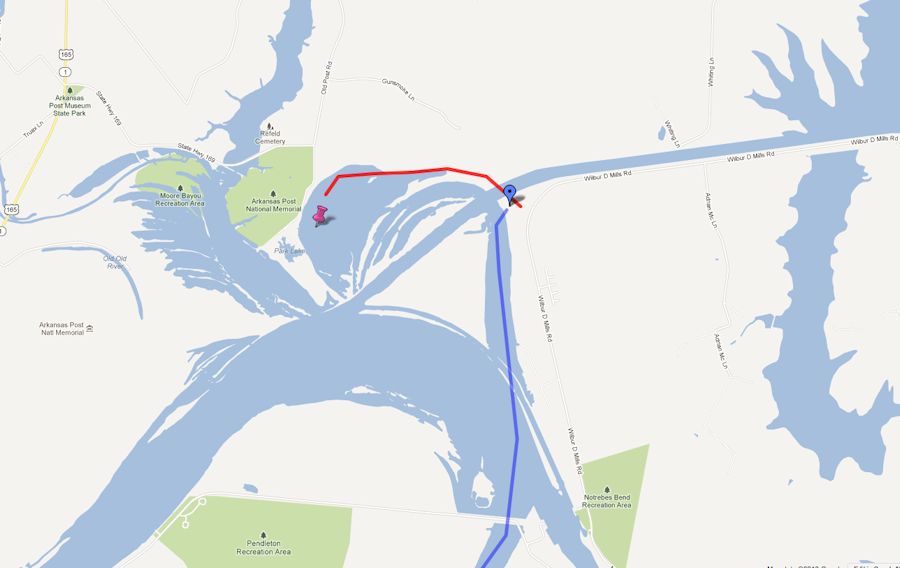| Previous Date | Day By Day Index | 16th OVI Home Page | Next Date |
Where was the regiment on
Sunday, January 11, 1863
By early morning on this day, Sherman succeeded in surrounding the Confederates and their fort at Arkansas Post.
With some focus on Col. DeCourcey's brigade, including the 16th Ohio, Private Frank Mason of the 42nd Ohio describes the battle:
DeCourcey's Brigade was astir early in its camp at the landing below. It had lost more than a third of its numbers at Chickasaw Bayou and Gen. Morgan preferred to hold it in reserve that day unless its services were actually needed. Leaving DeCourcey, therefore, posted so as to watch the road by which Steele's Division had counter-marched, and to guard the fleet from attack, Gen. Morgan, with the remainder of his Corps, pushed up to the front.
... Gen. Sherman had extended his attack so far round to the right that his line was weakened on the left, and he called upon Morgan for reinforcements. Morgan sent him the three reserve regiments of Smith's Division and immediately dispatched a courier to bring up DeCourcey. This gallant Brigade was found ready, and, on receiving the summons, hurried forward at a pace which soon brought it to the front. It was put in between Lindsay's Brigade and Smith's Division, and formed for the assault in column of regiments...
... DeCourcey's assaulting column moved rapidly forward through the brush and across the open space in front of the works. The fire that met this advance was vigorous, but the enemy was excited and aimed wildly. They saw the storming column coming and knew that further resistance was useless. Suddenly a white flag was run up at the Northeastern angle of the Fort. The firing suddenly ceased and DeCourcey's men began to cheer. Then the white flag was pulled down and a thin, scattering volley sputtered along the Rebel line. The flag had been unauthorized, and the fight was not yet officially over. Then the whole Federal line, including Foster's guns on the other side, poured in a final broadside, the finishing blow of that day's work. instantly the signals of surrender appeared all along the enemy's line. White handkerchiefs, tufts of cotton and gray hats were held up on ramrods and bayonets from behind their parapet. The command 'cease firing,' was given, and in a moment all was hushed excepting a few irregular shots far round to the right. The Rebels stood up behind their works and the victorious army gave three such cheers as are heard but once in a life time. ... Five thousand men, with all that was left of the Fort and its guns, were unconditionally surrendered after a gallant resistance against overwhelming numbers. ... A large number of Rebel dead had been thrown into a deep gorge, washed out by the rains in rear of the Fort. Others had been burned up in some barns which had been fired by Foster's shells. On the whole, the scenes within the works were far worse than on the outside.
... The prisoners stacked their arms and were marched down to the river bank. Their losses, notwithstanding the protection afforded by their works, had been severe, and the wounded and dead lay thick behind the parapet, inside the Fort, and in the large buildings at the rear, which had been used as hospitals.
Soon after dusk, when everything had become quiet, two Confederate regiments from Pine Bluff came marching in and found themselves prisoners of war. They piled their guns and were marched to the river bank, venting their feelings, meanwhile, in the hard and picturesque swearing for which Texan civilization is distinguished.
* Italicized text, above, taken from The Forty-Second Ohio Infantry - A History of the Organization and Services of That Regiment In the War of the Rebellion, 1876 - F. H. Mason, late Private of Company A - Cobb, Andrews & Co., Publisher.
Private Newt Gorsuch, Company B of the 16th Ohio, simply states:
Our men have the rebels surrounded in their fort. Gun boats firing on fort. Rebels made desperate charges to get out but failed. They surrender in evening. We took 8,000 prisoners, any amount of small arms, and a great many cannons. All the boats came up the river to fort after dark.
* Italicized text, paragraph above, from Civil War Diaries and Selected Letters of Robert Newton Gorsuch, a private in Company B, 16th OVI, recently published in book form by Newt Gorsuch's great grandson, Everett Gorsuch Smith, Jr. The book is available for purchase from various Internet sources.
Private Peter Perrine, Company C of the 16th Ohio, records the day as follows:
This morning the battle began in earnest and continued until about 4:00pm when the enemy pulled down their flag and run up the white rag. We captured about 7,000 prisoners, 3 field Batteries and 3 Siege guns together with a large amount of small arms ammunition and forage.
Artists sketch of Battle of Arkansas Post

Period map of the Battle of Arkansas Post; note Col. DeCourcey's brigade is shown as in reserve, some distance behind the battle area, however, the brigade was called to battle and participated in the successful attack:

Modern day map of the 16th Ohio's journey from their landing (with McClernand's entire force) on the east bank of the Arkansas River, east of Fort Hindman, to battle at Fort Hindman. Please note that the site of Fort Hindman is now under the waters of the Arkansas River, having carved out the bank westerly, engulfing the fort.
Blue pin - point where McClernand's troops, including the 16th Ohio, disembarked their steamboats
Red line - route of Col. John F. DeCourcey's brigade, including the 16th Ohio, from their reserve position at the landing site to engage the Rebels directly at the northern boundary of the fort on the afternoon of January 11, 1863, when called in by Gen. Morgan.
Lavender pin - Notional point where Sherman's flotilla reached on the night of January 3, 1863

| Previous Date | Day By Day Index | 16th OVI Home Page | Next Date |